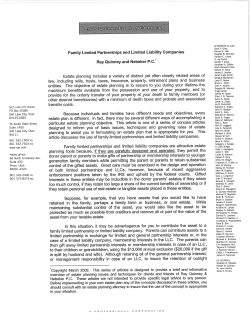
L6699: Enhanced high-voltage resonant controller
L6699: Enhanced high-voltage resonant controller Double-ended controller specific to series-resonant half-bridge topology IC description Symmetrical duty cycle, variable frequency control of ZVS resonant half bridge (HB) Available in SO16N halogen free package Css 1 16 VBOOT DELAY 2 15 HVG CF 3 14 OUT RFmin 4 13 N.C. STBY 5 12 Vcc ISEN 6 11 LVG LINE 7 10 GND DIS 8 9 PFC_STOP 2 Features and benefits Features Benefits • 600 V high side gate driver with integrated bootstrap diode and high dV/dt immunity • Improved reliability and reduced BOM • Non linear soft-start for monotonic output voltage rise • Prevents any dangerous hard switching at start-up • Self-adjusting adaptive dead-time • Maximized efficiency at both light and full load • Superior stand-by performance: 1. Improved burst-mode operating at light-load and noload 2. Direct interface with PFC controller 1. 2. No audible noise Reduced BOM 1. Avoid potential MOSFET cross conduction; avoid hard switching; improve reliability; reduce EMI Improved design flexibility Improved design flexibility Easier system design • High performance protections: 1. Anti-capacitive mode protection 2. Two-level OCP: frequency-shift and immediate shutdown 3. Latched disable input 4. Input for brownout protection or power ON/OFF sequencing 2. 3. 4. 3 Why move to L6699 It improves efficiency thanks to: • A reduced internal consumption: 1 mA of quiescent current • Its internal auto adjusted dead-time which allows the user to optimize the design of the resonant tank so that soft-switching can be achieved with a lower level of reactive energy (i.e. magnetizing current), hence optimizing efficiency under a broader load range, from full to light load It improves system reliability and lifetime thanks to: • The internal anti-capacitive protection, which prevents the converter from working in or too close to the capacitive mode, in order to guarantee soft-switching • The proprietary smooth start-up circuit that controls the half-bridge to prevent hard-switching from occurring in the initial cycles It avoids audible noise when entering burst-mode operation: • The first driver pulse length is shorter to prevent the initial peak current Easy to design! • Full set of both circuit calculation and simulation files (Orcad and Simplis) 44 STEVAL-ISA138V1: 90 W/19 V demo final efficiency data: full load 92.5% 92.0% 91.5% Efficiency The board is mounting diodes on secondary side 91.0% 90.5% 90.0% 115 V-60 Hz 230 V-50 Hz 89.5% Complete system: PFC + LLC stages 89.0% 88.5% 20% 30% 40% 50% 60% Load 70% 80% 90% 100% 5 STEVAL-ISA138V1: 90 W/19 V demo final efficiency data: light load 6 90.00% 85.00% 80.00% 75.00% Efficiency 70.00% 65.00% 60.00% Efficiency is higher than 53% with Pout of 250 mW (ErP lot 6 compliant) 55.00% 50.00% 115 V - 60 Hz 230 V - 50 Hz 45.00% Complete system: PFC + LLC stages 40.00% 35.00% 0 1 2 3 Output Power (W) 4 5 STEVAL-ISA143V1: 150 W/12 V demo efficiency data: full load 94.00% 93.00% 92.00% Efficiency 91.00% 90.00% 89.00% 115 V-60 Hz 230 V-50 Hz 88.00% 87.00% 86.00% 20% Complete system: PFC + LLC + SRK2000 30% 40% 50% 60% Load 70% 80% 90% 100% 7 STEVAL-ISA143V1: 150 W/12 V demo light load efficiency data: light load 8 85.00% 80.00% Efficiency 75.00% 70.00% Efficiency is higher than 51% with Pout of 250 mW (ErP lot 6 compliant) 65.00% 60.00% 115 V - 60 Hz 230 V - 50 Hz 55.00% Complete system: PFC + LLC + SRK2000 50.00% 0 1 2 3 Output Power (W) 4 5 Thank you! 9
© Copyright 2025


















